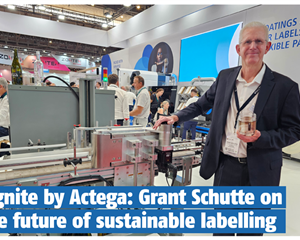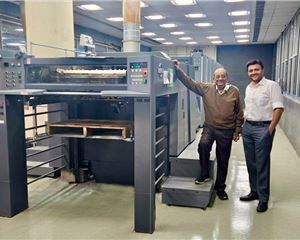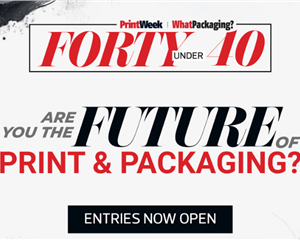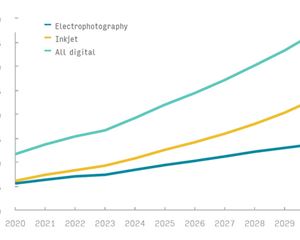Sakata Inx India: The 6% growth story
VK Seth, the managing director of the Gurugram-based Sakata Inx India and member, International Advisory Board Sakata Inx Corporation, Japan demystifies the Indian printing ink industry – both in terms of the business and the technology – and speaks to Ramu Ramanathan about Sakata Inx’s presence in India and globally
05 Jul 2017 | By Ramu Ramanathan
Ramu Ramanathan (RR): What is the 12 month update from Sakata Inx India?
V K Seth (VKS): Printing and packaging had been on a slow trajectory in 2016. Most of the converters and printers were struggling for growth in the year gone by. Newspapers were also not doing well. With the oil prices that kept falling, and the consumption story taking a hit, certain things went haywire because there was always an over-capacity that was available. There was a stiff competition to maintain your market share in the shrinking market. This had an impact on both, the top line as well as the bottom line earnings of the print companies and their stake holders like us. The selling price kept on falling down due to the absence of growth. The companies were merely fighting for survival.
RR: We have reports from the industry citing a significant impact of demonetisation. True or false...
VKS: As per our estimates, the printing /packaging market shrunk by five to six percent. Although we haven’t gone negative with our numbers, a period of no growth gets considered as negative by me. If I compare the numbers with the last quarter of previous year, the numbers this year were quite flat.
RR: But Sakata has had good growth.
VKS: Quite true. Sakata Inx India did grow overall at around 6%, on the back of our growth in two segments, our growth in exports to new territories. Plus the growth in the newspaper segment was a saviour for us. We did survive, although it was a difficult period with the falling prices. Things have started looking up this year. There may not be major capacity enhancements this year but it will be a phase of consolidation and recovering whatever was lost, last year.
RR: What’s the segment wise break up for Sakata?
VKS: Sakata’s liquid inks are available for flexible packaging and comprises two-third of our business. The remaining one-third comes from newspapers and sheetfed. So the two major verticals we cater to are offset and gravure.
RR: What about Sakata’s growth in these segments? Has it been steady?
VKS: Gravure grew about three percent last year and offset was higher at about 12-13%.
RR: Is this growth because of the addition of new machines or a better performance ratio with the current set-up?
VKS: We have increased our manufacturing capacities and consequently we did increase our share in major newspaper houses like TOI, HT, Dainik Jagran, ABP, Amar Ujala, Dainik Bhaskar, etc.
RR: What is happening in the other segments?
VKS: The numbers in book printing are good and it is growing but the commercial printing numbers are pretty flat. Packaging and sheetfed are growing and some of the newspapers have grown by four to six percent. I feel the growth in these segments is going to be steady in the coming years.
RR: When we talk about inks, raw material ingredients like resins, solvents and pigments get neglected. What we have found, among the users of Sakata Inx India, that there is an interest to know two things: what is the kind of science involved in manufacturing of inks and where is the sourcing of raw materials happening from. In lieu of your operations, if you can shed some light on: a) in terms of technology and b) where are you sourcing these materials from?
VKS: Lot of the raw materials that we use are local. We also import materials from Japan/European countries and a bit from China as well. These would include organic and inorganic pigments as well as certain resins and additives. Then we have certain black box materials from Japan that comprises technology materials. Resins are of many types that get sourced from different places. For example, some resins come from Japan, Europe while many get sourced locally from India.
RR: What’s your view on the possibility of exploring pigment intermediates being manufactured or sourced locally from India?
VKS: Sakata is the only company among the top four ink companies at the global level which doesn’t believe in manufacturing raw materials. So probably we are the largest buyers. We have various advantages like the scale of buying and on top of that we get to choose and buy the best raw materials which we feel are suitable for our ink formulations. It’s probably not in the philosophy of Sakata Inx to manufacture the raw materials in-house. We stick to our core competency and that is to remain focussed as a quality ink manufacturer. I would like to add that non-availability of pigment intermediates in the local sphere does put a pressure on the pricing of local pigments as by and large majority of the pigment intermediates gets imported into India.
RR: In terms of knowledge sharing with the Indian printing and packaging companies, has there been any handholding to bring them up to a level where we as an industry are lagging?
VKS: It happens at various levels and on various fronts. At the end consumer front, companies like Nestle, Coke or P&G ask Sakata Inx to get involved and provide certain solutions. If they want specific solutions, we are the first ones to get a call. Then, once these big companies start asking for the solutions, others want to follow. We have seen instances wherein an action taken by a single company gets horizontally deployed by the others. Such instances have been very few and I am not sure in the absence of strong regulatory mechanisms everybody wants to change. At the convertor/printer level some companies are leaders for asking for change and we are at the forefront to support such initiatives.
RR: Do you think there will be an elimination of solvent and there will be toluene free products in India in the near future?
VKS: This is very interesting situation. Last year we sold over 1,500 tonnes of NTNK inks. This change is happening already at fairly fast pace. I find it baffling that many are unaware of the levels at which these products are getting consumed, in India as well as in international markets. So according to me Toluene MEK-free inks are already being used on a large scale. I believe that we are at the forefront of supplying such products. Companies like Huhtamaki are at the leadership board of such change in the industry.
RR: What are the deterrents? Cost? Or just lack of awareness?
VKS: It seems to be the cost factor which is definitely on the higher side. Currently the change is being driven by top multinationals which are ensuring that certain negative compounds don’t get used in their products.
RR: What is the ratio right now in terms of domestic consumption from the facility at Bhiwadi and Panoli?
VKS: Panoli is contributing 55% and Bhiwadi share is only 45% now.
RR: What is the capacity size?
VKS: At the gravure end, we have a capacity of manufacturing about 28,000 tonnes of ink and offset would be around 20,000 tonnes with a countrywide team of 800 people, 40% of whom would be contract employees.
RR: The growth figures in sales fluctuate from 15% to 20% depending upon who you talk to in the industry. However those numbers don’t match the overall growth figures of the industry. What do you think is the reason for that?
VKS: You know the funny part about the numbers in our Indian packaging and print industry is nobody knows the actual figures. It is a big tragedy that the real numbers are not known. At Sakata Inx India, for our own internal consumption we do periodic market surveys for different segments. We have certain numbers which are good for us but by and large the figures are not known because lot of companies don’t even file their correct returns. There is a lot of under-reporting or under-invoicing that happens. I hope after the implementation of Goods and Services Tax (GST) this ambiguity will vanish or at least reduce.
RR: Are you hinting towards the converters or the ink manufacturers when you talk of under reporting?
VKS: Both. For example, a lot of numbers from the gutkha industry go under-reported. Gutkha constitutes about 35-40% of the flexible packaging market and that is a substantial portion of the flexible market.
RR: Will GST have an impact on Sakata Inx India?
VKS: We will have a single slab. We are under 18%.
RR: Sir: what is the kind of conversation that you hear in India from the big converters?
VKS: All of them are expanding. All of them are setting up new units in new territories. All of them are looking at innovation in packaging and they are expecting ink makers to help them. The regulatory compliances seem to be getting tough to deal with and the demands have increased from them on that front. All of them seem to be on the constant lookout for new type of packaging whether it is with security features or some speciality features and high performance inks that can provide extra gamut and so on. Overall I think everybody seems to have an ignited mind in terms of the growth story.
RR: Any downside?
VKS: The only negative that is evident under the present dispensation from my own perspective is that the recent measures that the government is taking should quickly result in the creation of new jobs. Only new job creation can improve the consumption of printing and packaging.
RR: What kind of conversation is Sakata having with the super brands?
VKS: I think India is leading the way when it comes to expectations from the printed products. What is happening is that there is a kind of reverse education that has begun in India. Whatever happens here, the others outside want to adopt. But for the regulatory affairs a lot a directions are still coming from Europe and the developed markets. Super brands interact with us on selective case by case basis for certain developmental requirements.
RR: Can you share a little bit about the structure of Sakata India? How do you penetrate the various segments and what is the outreach on the ground?
VKS: At the marketing end we have two verticals – liquid inks and offset. Liquid inks vertical also share the responsibility of all exports from India. These two verticals have a large network of dealers, distributors and channel partners. We have elaborate channel partners for both the verticals separately and they are widely placed from North to South to East to West. Then we have offices in Mumbai and Hyderabad besides having our Head Office here in Gurugram. Then we have C&F (clearing and forwarding) agents in Kolkata and Mumbai. Most of our business gets catered to by the dealers. We have ink matching centres in all metro cities of India. Some of these are set up by the dealers and not necessarily company owned. For the ones that are company owned the dealers receive the training and are given colour matching software by the company.
RR: Has it become more difficult to sell ink?
VKS: I have a slightly humorous take on this. Selling ink in India is the easiest thing. If I want to sell my entire present and future capacity I will be able to do that. What I say now will come across as a bold statement but selling ink is not an issue. The real issue is making profits. There are only a handful of newspaper houses and certain flexible packaging companies that seek quality of inks. The rest are happy with the basic inks. So I think no ink company is indispensable. There is no customer loyalty when it comes to the preferred ink supplier.
RR: Why is this happening?
VKS: The appetite for profit in India especially with converters/printers and also with the raw material suppliers like ink, is extremely small. There is acute competition for the small market segment where everyone is jostling for the same space. And selling at a reasonable profit becomes a big challenge. There is no business-sense in this. The challenge is whether you can sell it at a price that is reasonably profitable.
RR: Under such circumstances, which are the key segments in the flexipack segment?
VKS: Food packaging, cosmetics and hygiene are the growth segments. One segment that is growing quickly is bulk packs for flour, cereals, fertilizer, cement, the pp-extrusion bags.
RR: What troubleshooting measures has Sakata adopted for guidance and support to its customers?
VKS: We have four individuals from Japan who are stationed in India. They are the team leaders for our large group of technical service people. These technicians get regularly trained to upgrade their skills and are empowered with tools to identify issues as a part of customer service and provide solutions. They are spread all over the country.
RR: Your CV mentions you are on the international advisory board of Sakata Inx Japan. Can you tell us about Sakata Inx’s global products?
VKS: Globally our market share is increasing rapidly in flexible packaging. We have a strong technology for liquid inks. The other product that we are proud of is the water-based flexo inks for which we have a large customer base in Southeast Asia. And then there is metal-can decoration inks in which we have a global market share of 85%. In North America we are pretty strong with our UV range – UV flexo or UV Sheetfed. And finally we are quite strong in the market of digital inks on a global level. For digital inks, we have manufacturing sites in USA, Europe, China and Japan. These would essentially be wide-format digital inks – both solvent/water and UV.
RR: What’s the market reach for Sakata Inx for the digital inks in India?
VKS: In the past, we had done a market survey based on which we have a good insight of the growth of the industry and the available product mix. Currently we are being cautious and will wait and watch for the trends. The wide-format market has been growing but not so much in the outdoor applications as in the indoor applications. The demand of inks required for outdoor applications is quite low. Hence inks with inferior quality at low prices get manufactured in India. More than 95% of the market is filled with these inks. Currently it is a very low margin product for us in India. We also feel that the market size is still not big enough to demand an investment in a global size manufacturing facility.
RR: But the market has grown?
VKS: The market must have grown today from the time we did the survey around seven years ago. Our estimate of market size should be between 7,000-8,000 tonnes/annum
RR: In terms of government regulatory bodies in India, after the ban on Maggi and the consequent impact it had on the business of Nestle, a few companies have been proactive in approaching FSSAI (Food Safety and Standards Authority of India) and talking to them. Have you made any efforts in India and talked to the regulatory bodies?
VKS: Our regulatory compliance division is also on the board of Bureau of Indian Standards. It contributes a lot in the interactions that the bureau is having with the stake holders. Sakata Inx India plays its role in helping to improve the standards in certain regulatory aspects. The machines have to be well equipped with features like chilling, drying systems to be able to use the right kind of inks. Just the FSSAI cannot bring about the change. The driving factor in India has always been the cost. The big multinationals want to be part of the growth story and for that the pricing of the products becomes very important. Likewise in China, in India too, the multinationals have priced their products at a price point so as to increase their share in the fast growing urban population. So while it is desirable to look for these regulatory compliant health safety products, at the same time all the multinationals have an eye on the growth especially at the rural level and that can only happen through pricing. If their product costs one and half dollars (approximately Rs 96) it will not get sold in India. That product has to cost about Rs 10-12 and hence the other factors like regulations take a backseat.
RR: The question that keeps coming up when we have a discussion with food brands is the concern on packaging inks. In response to the challenges the FSSAI are raising, how do we as an industry respond?
VKS: Sakata Inx today is at the forefront in terms of supplier of environment and human friendly products. We are the first choice of the converters to provide solutions for compliance of various regulations. For example, companies like Nestle and P&G prefer Sakata Inx on a global level for following compliances. In India, we have a market share of about 40-45% of all the global brands, be it Coke, Pepsi, Nestle, ITC, Britannia, P&G and so on. In UAE our market share is way up at 80-90%. Even with our products in offset printing, we are able to comply with the European/REACH standards for products that we have been exporting from India.
RR: What about audits and compliances?
VKS: I think we are well equipped. Sakata has an elaborate process for maintaining the various compliances. We periodically test our products and acquire certification from our suppliers. We strictly adhere to these policies. We also take pride in keeping ourselves updated with the recent regulations through our knowledge base and I feel we are way ahead of the curve in terms of adhering to compliances.
RR: Can you tell us more about these stringent measures…
VKS: Our R&D division has primarily four functions. First is the continuous work on validation and substitution of raw materials. Since the price to quality ratio in India is the best in the world, there is a consistent need to work on different raw materials so as to be able to provide cost effective solutions to our customers. The second function is to monitor the competition in terms of data by checking their quality, costing and raw materials. The third function is to develop Sakata Inx’s businesses outside India. Sakata Inx India has been assigned the largest business territory outside India and it is from here that we cater to Sakata Inx’s business in neighbouring countries, UAE, CIS nations, Middle East, Africa and parts of Eastern Europe. It is a wide variety of customers, environments, climatic conditions and even different ink systems. Our R&D division comes up with formulations that are suitable for wider territory. The fourth function is related to the regulatory work, to ensure that our products comply with the international standards through continuous upgradation.
 |
RR: What new products from Sakata Inx? Any announcement at Interpack 2017?
VKS: We haven’t introduced anything new recently. For our new product range, the stress is mainly on environment friendly, low migration products and water based products. Sakata is focussed to provide high speed and low wastage solutions keeping in mind the regulatory requirements of different markets.
RR: Does it impact de-inking or recycling to some extent?
VKS: I consider these aspects to be a part of academic discussions. On an academic front this question seems fine and gets taken up as a topic in college debates or print symposiums. The practicality of this has a lot of issues if you observe what’s happening in reality at the ground level. Say for example, the amount of food that comes in contact with the inks when it gets wrapped in newspapers. You see this happening a lot at grocery shops in urban and rural areas. The printed products have varying components of petroleum, mineral oils and bitumen all of which are harmful. And then there’s vinyl inks which emit chlorine compounds at the incineration/recycling level and can be highly carcinogenic. Hence vinyl inks have been banned all over the world. Except for India, where we use vinyl inks and toluene-based products. This is the practical side of printing and packaging in India. As I had said earlier, unless the government intervenes with the regulatory aspects and brings about its implementation, only then will there be some amount of change. Being a multinational I strongly feel that the regulations should get implemented, in the absence of which, we get called upon to compete with certain products that are harmful and unregulated and that exist in the same market space. This becomes a handicap for us and the choice we get is to either join the party or remain isolated.
RR: There is a lot of ambiguity as to which ministry should be addressed to introduce these regulations…
VKS: If at all it has got to be the health ministry that should be concerned with this.
Personal questions
Non-ink interests
Golf. I have a handicap score of 26 and I usually play at the ITC Classic Golf and Country Club.
Not keen in plebeian sports like cricket?
Being a Chelsea fan, I am fond of watching football in the English Premier League.
A good read according to you?
Personally, I scan through a lot of trade magazine and management magazines on a daily basis for two to three hours.
Your academic qualification?
Chemical engineer from Punjab University in Chandigarh, 1975 batch.
Hometown?
New Delhi. And now it’s Gurugram.
Favourite five Sakata products?
All Sakata products encompass high technology and I love all of them.












 See All
See All